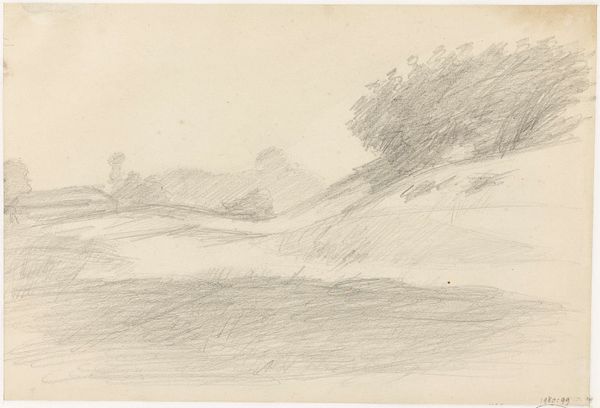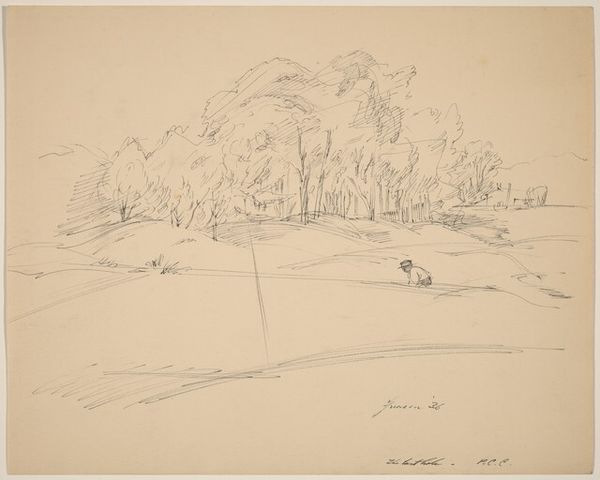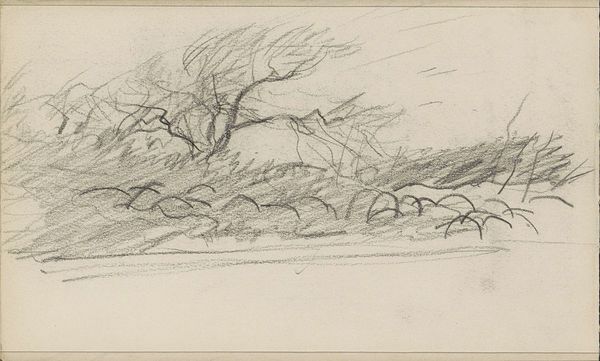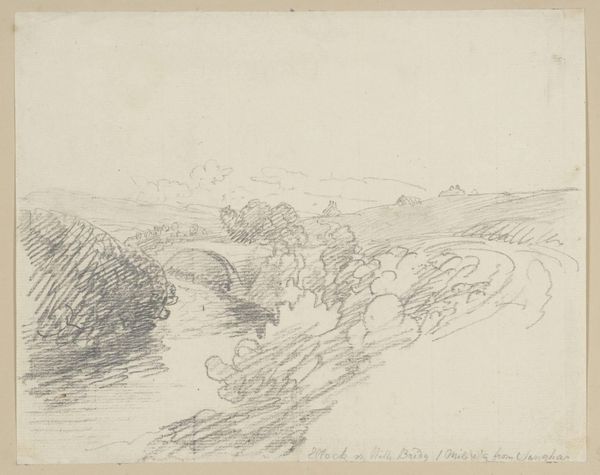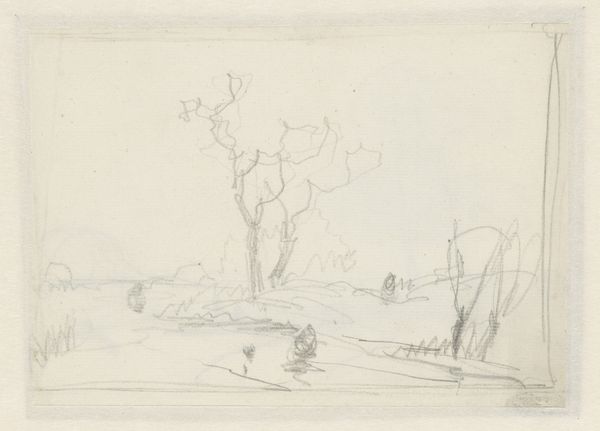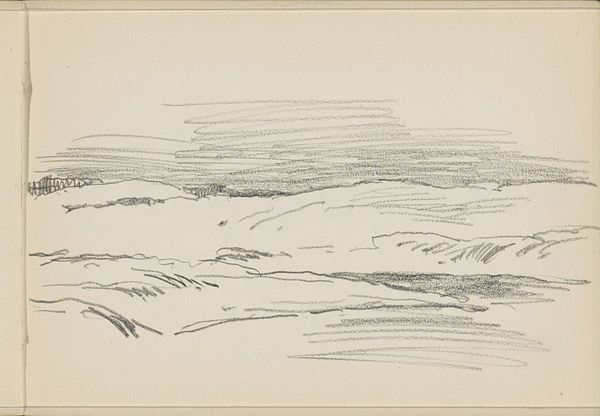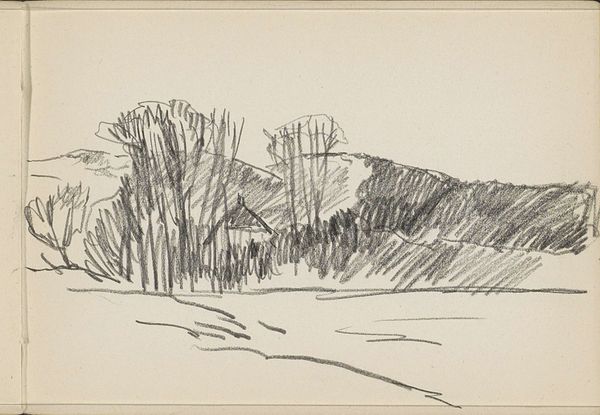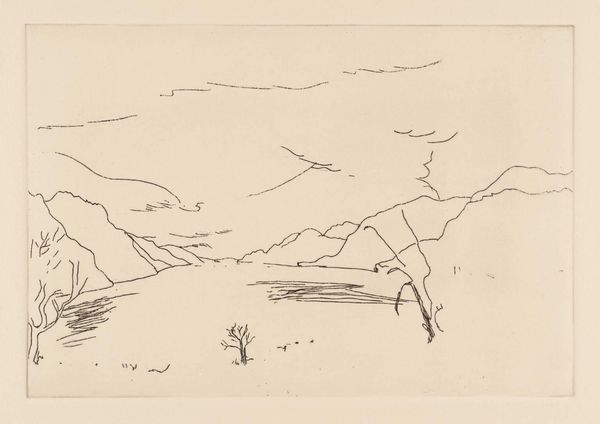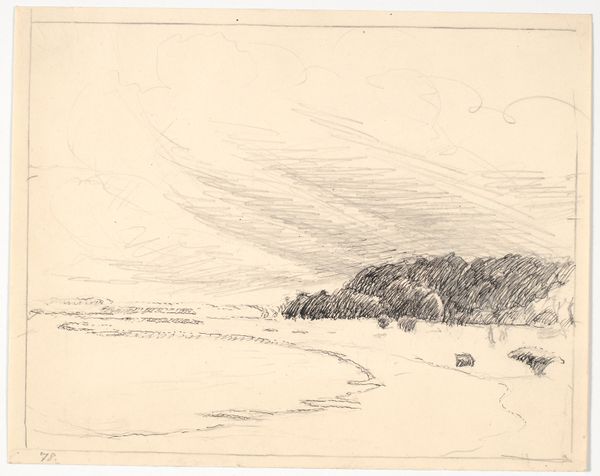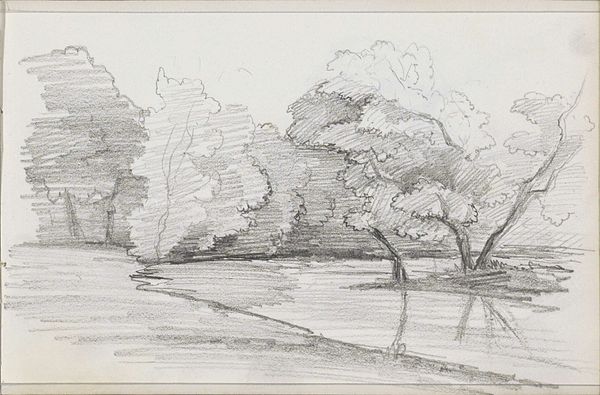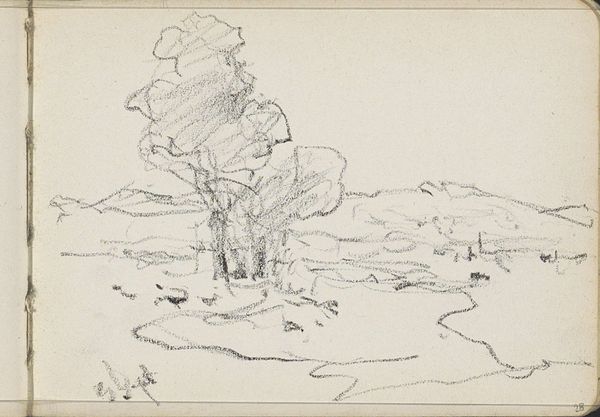
Copyright: Rijks Museum: Open Domain
Curator: Up next, we have a sketch titled "Landschap met bomen," or "Landscape with Trees," by Cornelis Vreedenburgh, dating roughly between 1890 and 1946. It's a delicate pencil drawing on paper. Editor: My first impression is one of quiet observation. The pencil strokes are so gentle; it feels like a fleeting moment captured from nature. There is an unhurried simplicity to it. Curator: Indeed. Vreedenburgh worked during a period of significant shifts in artistic expression. While he employed a rapid sketch-like quality that shares affinities with Impressionism, this scene aligns itself firmly with the Realist traditions championed by Dutch artists from the Golden Age and beyond. Editor: The tree in the foreground, though, takes center stage, doesn’t it? The heavier shading pulls your eye there first. The way he’s captured the density of the leaves feels symbolic of nature’s abundance and power. Trees, of course, have long been symbols of life, growth, and interconnectedness across many cultures. Curator: It is true. And beyond that symbolic resonance, trees carried a socio-political weight. For centuries in Dutch art, landscapes became assertions of national identity, emblems of ownership, and a visual celebration of the reclaimed land – nature brought to heel and providing bounty for all. Editor: So, while it appears to be a simple landscape, it echoes national pride. The horizon line gives us a sweeping sense of land and sky. And do you notice those soft clouds barely sketched above the tree? Almost as if they mirror its form. Curator: A compositional technique used to draw the eye through different spaces in the frame, a hallmark of landscape painting to connect the terrestrial and ethereal. It emphasizes, as you noted, a natural continuity. This sketch speaks volumes, regardless of its modest presentation. Editor: Yes, a subtle masterpiece capable of revealing our cultural memories of nature and our place within it. Curator: It will be interesting to see what modern visitors find meaningful in the artist’s composition, its natural harmony but perhaps more especially, considering its period of production, what the nature around them now provides to their culture.
Comments
No comments
Be the first to comment and join the conversation on the ultimate creative platform.
